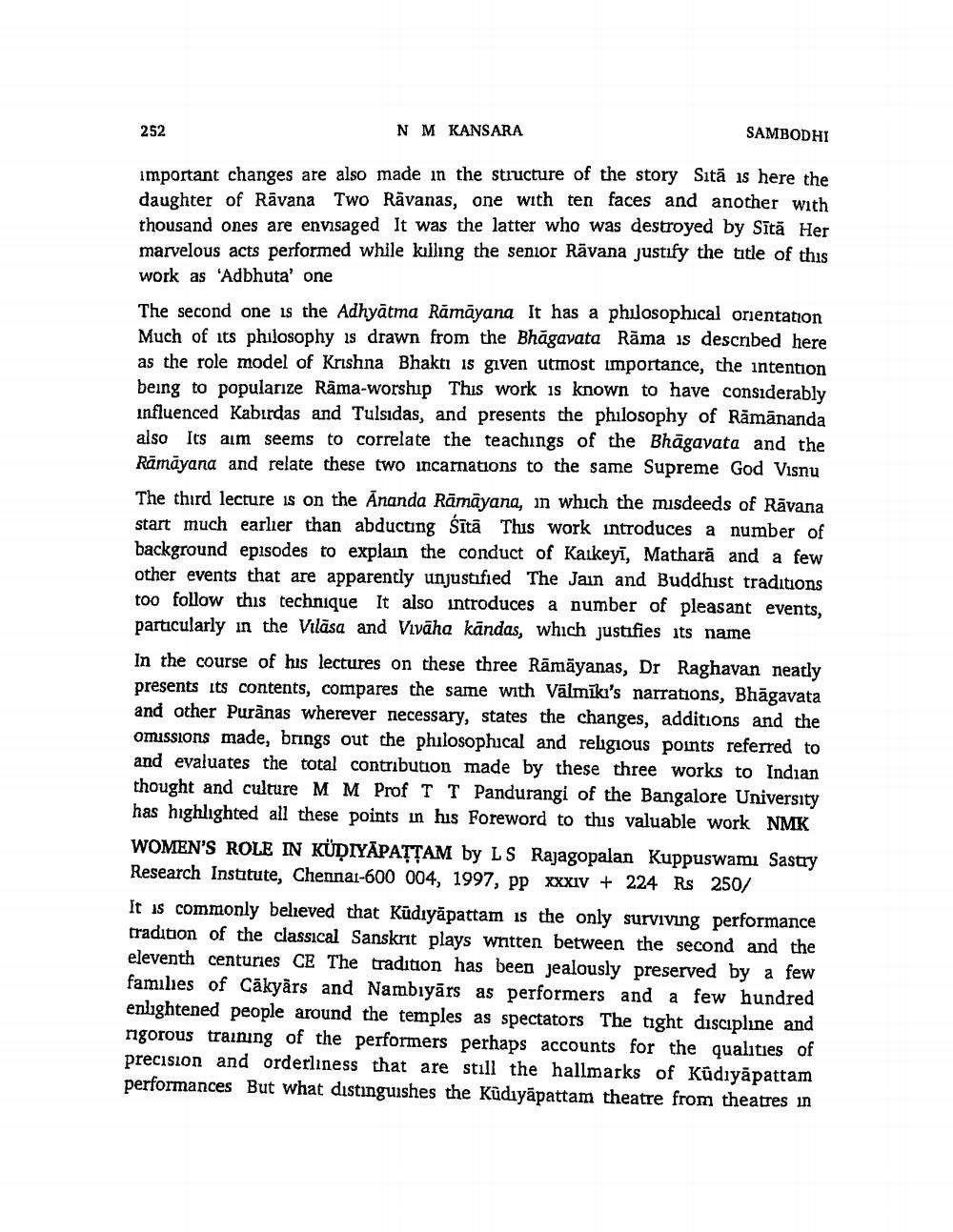________________
252
NM KANSARA
SAMBODHI
important changes are also made in the structure of the story Sitā is here the daughter of Rāvana Two Rāvanas, one with ten faces and another with thousand ones are envisaged It was the latter who was destroyed by Sītā Her marvelous acts performed while killing the senior Rāvana justify the title of this work as 'Adbhuta' one The second one is the Adhyātma Rāmāyana It has a philosophical orientation Much of its philosophy is drawn from the Bhagavata Rāma is descnbed here as the role model of Krishna Bhakti is given utmost importance, the intention being to popularize Rāma-worship This work is known to have considerably influenced Kabırdas and Tulsidas, and presents the philosophy of Rāmānanda also Its aim seems to correlate the teachings of the Bhāgavata and the Rāmāyana and relate these two incarnations to the same Supreme God Visnu The third lecture is on the Ananda Rāmāyang, in which the misdeeds of Rāvana start much earlier than abducting Sītā This work introduces a number of background episodes to explain the conduct of Kaikeyi, Mathara and a few other events that are apparently unjustified The Jain and Buddhist traditions too follow this technique It also introduces a number of pleasant events, particularly in the Vilāsa and Vivāha kāndas, which justifies its name In the course of his lectures on these three Rāmāyanas, Dr Raghavan neatly presents its contents, compares the same with Vālmīki's narrations, Bhāgavata and other Purānas wherever necessary, states the changes, additions and the omissions made, brings out the philosophical and religious points referred to and evaluates the total contribution made by these three works to Indian thought and culture M M Prof T T Pandurangi of the Bangalore University has highlighted all these points in his Foreword to this valuable work NMK WOMEN'S ROLE IN KÜDIYĀPATTAM by LS Rajagopalan Kuppuswami Sastry Research Institute, Chennai-600 004, 1997, pp XXXIV + 224 Rs 250/ It is commonly believed that Kūdıyāpattam is the only surviving performance tradition of the classical Sanskrit plays written between the second and the eleventh centuries CE The tradition has been jealously preserved by a few families of Cākyars and Nambiyārs as performers and a few hundred enlightened people around the temples as spectators The tight discipline and rigorous training of the performers perhaps accounts for the qualities of precision and orderliness that are still the hallmarks of Kūdiyāpattam performances But what distinguishes the Kūdıyāpattam theatre from theatres in




